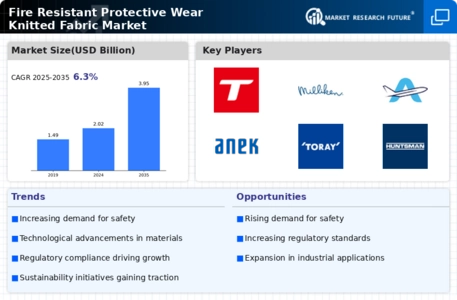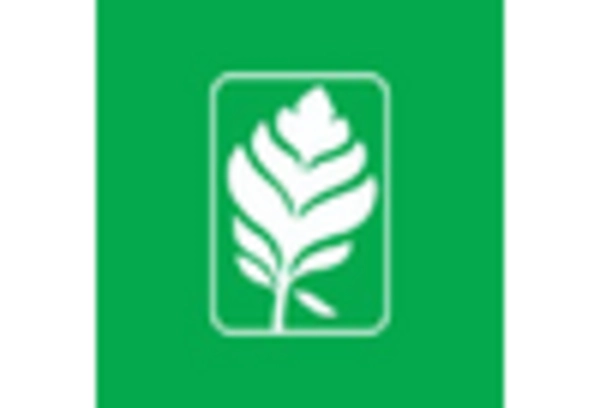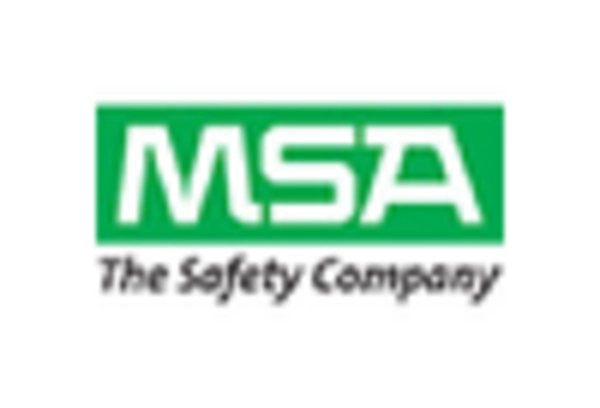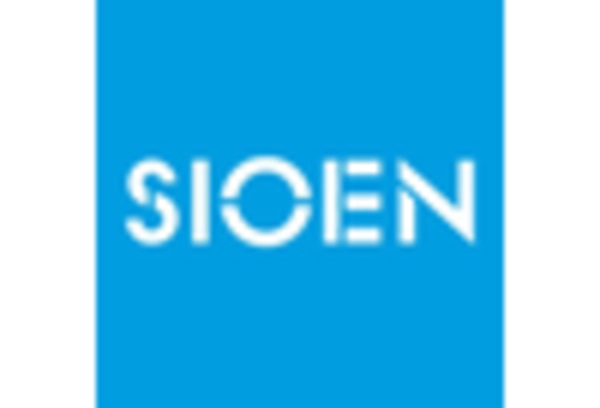Growth in the Oil and Gas Sector
The oil and gas sector is a significant contributor to the demand for fire-resistant protective wear, thereby impacting the Fire Resistant Protective Wear Knitted Fabric Market. As exploration and production activities expand, the need for protective clothing that can withstand extreme conditions becomes paramount. Workers in this sector face numerous hazards, including exposure to flames and high temperatures, necessitating the use of specialized knitted fabrics that offer superior protection. The oil and gas industry is projected to grow at a compound annual growth rate of 4.5% through 2027, which is likely to further drive the demand for fire-resistant clothing. This trend indicates a robust future for the Fire Resistant Protective Wear Knitted Fabric Market as it aligns with the needs of this critical sector.
Rising Awareness of Workplace Safety
There is a notable increase in awareness regarding workplace safety, which is significantly influencing the Fire Resistant Protective Wear Knitted Fabric Market. Organizations are recognizing the importance of providing adequate protective gear to their employees, particularly in high-risk environments. This heightened awareness is leading to greater investments in fire-resistant clothing, thereby boosting the demand for knitted fabrics that offer both comfort and protection. According to industry reports, the market for fire-resistant clothing is expected to reach USD 4 billion by 2026, reflecting a growing commitment to employee safety. This trend suggests that the Fire Resistant Protective Wear Knitted Fabric Market will continue to thrive as companies prioritize the well-being of their workforce.
Increasing Industrial Safety Regulations
The Fire Resistant Protective Wear Knitted Fabric Market is experiencing growth due to the increasing emphasis on safety regulations across various industries. Governments and regulatory bodies are implementing stringent safety standards to protect workers from fire hazards, particularly in sectors such as oil and gas, construction, and manufacturing. This regulatory push is compelling companies to invest in high-quality fire-resistant protective wear, which in turn drives demand for knitted fabrics that meet these safety standards. As a result, the market is projected to expand, with an estimated growth rate of 5.2% annually over the next five years. The need for compliance with safety regulations is likely to remain a key driver in the Fire Resistant Protective Wear Knitted Fabric Market.
Emerging Markets and Economic Development
Emerging markets are witnessing rapid economic development, which is positively influencing the Fire Resistant Protective Wear Knitted Fabric Market. As industries in these regions expand, there is an increasing focus on worker safety and compliance with international safety standards. Countries in Asia and Africa are particularly investing in infrastructure and industrial projects, leading to a surge in demand for fire-resistant protective wear. This trend is expected to create new opportunities for manufacturers of knitted fabrics, as they seek to cater to the growing needs of these markets. The potential for growth in emerging economies suggests that the Fire Resistant Protective Wear Knitted Fabric Market will continue to evolve, adapting to the unique challenges and requirements of these regions.
Technological Innovations in Fabric Development
Technological advancements in fabric development are playing a crucial role in shaping the Fire Resistant Protective Wear Knitted Fabric Market. Innovations such as the incorporation of advanced fibers and coatings are enhancing the performance of knitted fabrics, making them more effective in resisting flames and heat. These developments not only improve the protective qualities of the fabrics but also enhance comfort and wearability, which are essential for workers in demanding environments. The introduction of smart textiles that can monitor temperature and provide real-time feedback is also gaining traction. As these technologies evolve, they are likely to attract more investment and interest in the Fire Resistant Protective Wear Knitted Fabric Market, potentially leading to a market growth rate of 6% over the next few years.


















Leave a Comment